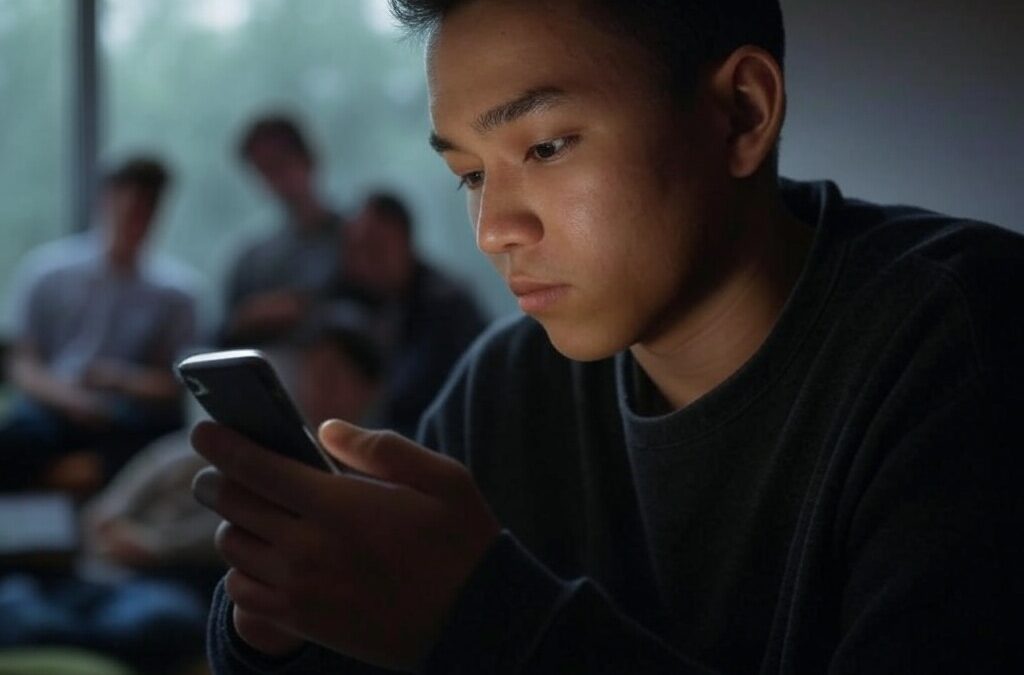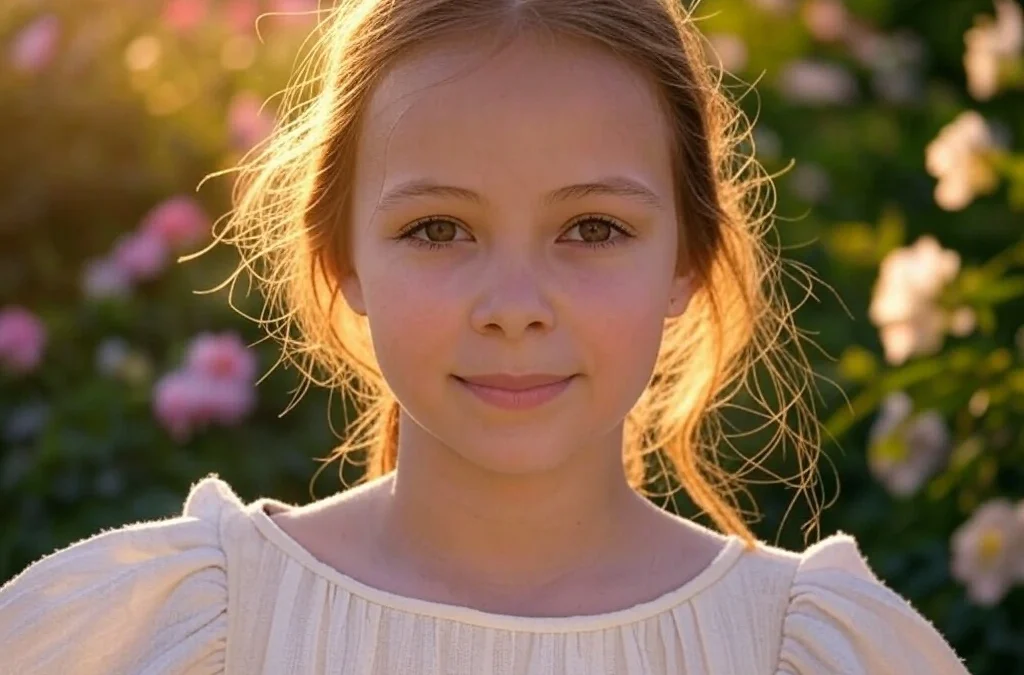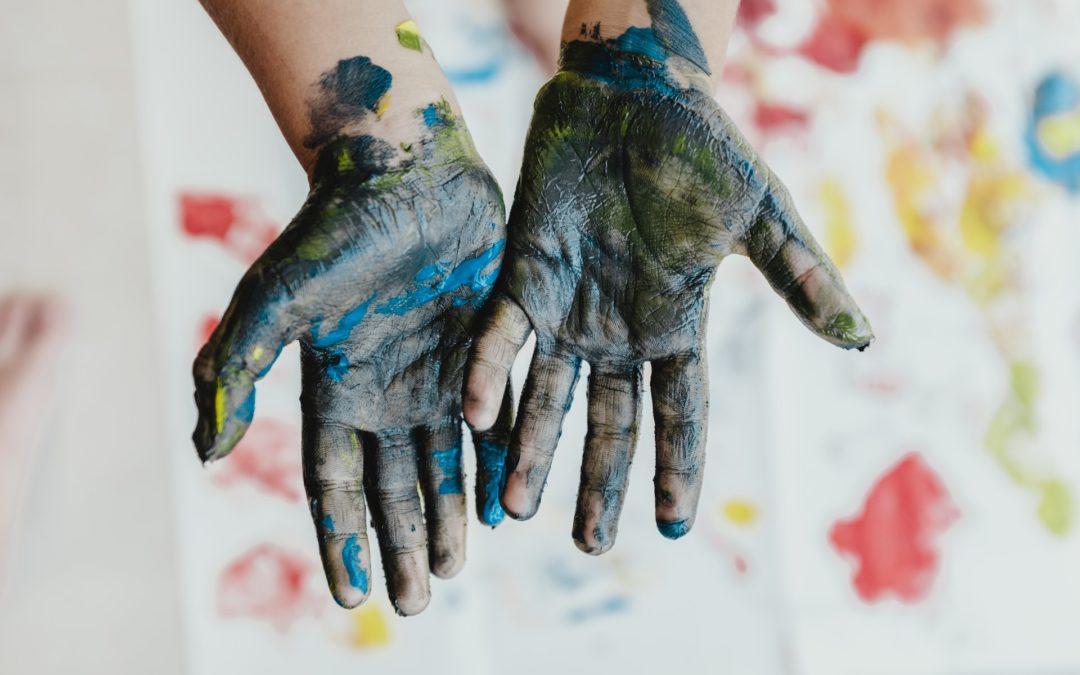Art education plays a crucial role in nurturing creativity, critical thinking, and self-expression among individuals of all ages. With its ability to inspire and engage, art education goes beyond the boundaries of traditional learning, encouraging personal growth and cultural enrichment. In this article, we will explore 30 outstanding examples of art education initiatives from around the world, showcasing innovative approaches and impactful programs. In this article you will find art education ideas and examples for children, schoolchildren, students and adults alike.
Best Examples of Art Education
1. Plein Air Painting Workshop
Plein air painting workshops provide participants with the opportunity to paint outdoors, capturing the beauty of natural landscapes or urban scenes directly from life. Led by experienced artists, these workshops focus on techniques such as composition, color mixing, and capturing light and atmosphere. Participants learn to observe and interpret their surroundings while honing their skills in outdoor painting.
2. Museum Education Programs
Museum education programs provide valuable opportunities for students to engage with artworks and artifacts in a museum setting. Museums often offer guided tours, workshops, and interactive exhibits tailored to different age groups and educational levels. These programs encourage active learning, visual analysis, and interpretation of artworks, fostering students’ appreciation for art history, cultural heritage, and aesthetics.
3. Digital Art and Design Workshop
Digital art and design workshops focus on creating art using digital tools and software. Led by experienced digital artists or designers, these workshops cover topics such as digital painting, graphic design, or 3D modeling. Participants learn techniques specific to digital art, such as digital brushwork, image manipulation, or creating digital illustrations.
4. Community Art Projects
Community art projects involve collaborations between artists, educators, and community members. These projects aim to address social issues, promote cultural understanding, and engage the community in artistic expression. They often take the form of murals, public installations, or performance events. Community art projects foster community cohesion, encourage dialogue, and empower individuals to participate in the creative process.
5. Arts Integration in Curriculum
Arts integration refers to the intentional incorporation of arts disciplines, such as visual arts, music, dance, or theater, into other academic subjects. This approach recognizes the potential of the arts to enhance learning outcomes across various disciplines, including math, science, history, and literature. By integrating arts into the curriculum, students develop a deeper understanding of the subject matter and cultivate their creativity and critical thinking skills.
6. Art Education for Creative Entrepreneurship
Art education programs that incorporate elements of creative entrepreneurship equip students with the skills and knowledge to turn their artistic passions into sustainable careers. These programs provide instruction on topics such as marketing, branding, financial management, and networking within the creative industries. By merging artistic excellence with entrepreneurial acumen, students can navigate the professional landscape, build successful artistic ventures, and contribute to the creative economy.
7. Sculpture and Ceramics Workshop
Sculpture and ceramics workshops offer hands-on experiences in three-dimensional art forms. Participants learn techniques such as hand-building, sculpting, and glazing to create ceramic artworks or sculptures. Led by professional sculptors or ceramicists, these workshops provide guidance on form, texture, and firing processes. Participants gain practical skills while exploring the expressive possibilities of sculptural art.
8. Arts Exchange Programs
Arts exchange programs promote cultural exchange and collaboration between artists, educators, and students from different regions or countries. These programs facilitate the sharing of artistic techniques, cultural practices, and perspectives, fostering cross-cultural understanding and appreciation. Participants engage in workshops, exhibitions, and joint artistic projects, enriching their artistic practice and broadening their global awareness.
9. Online Art Education Platforms
Online art education platforms have emerged as accessible and flexible resources for art learning. These platforms offer a wide range of courses, tutorials, and workshops, allowing individuals to learn at their own pace and from the comfort of their homes. With interactive features and feedback mechanisms, online platforms provide guidance and support to aspiring artists, fostering skill development and artistic exploration across various mediums and styles.
10. Artist Mentorship Programs
Artist mentorship programs connect established artists with emerging artists or students seeking guidance and mentorship. These programs provide personalized attention, constructive feedback, and practical advice on artistic techniques, career development, and professional opportunities. Artist mentorship programs nurture artistic talent, encourage artistic growth, and facilitate connections within the art community, empowering emerging artists to thrive in their creative pursuits.
11. Art Competitions and Exhibitions
Art competitions and exhibitions provide platforms for students, emerging artists, and even established professionals to showcase their artistic creations. These events encourage participants to refine their skills, experiment with different styles, and receive constructive feedback from experts and peers. Through the process of submission, selection, and display, artists gain exposure, recognition, and motivation to further develop their artistic abilities.
12. Art History Education
Art history education focuses on the study of different art movements, styles, and artists throughout history. It provides students with a comprehensive understanding of artistic developments, cultural contexts, and aesthetic principles. By exploring artworks from diverse cultures and time periods, students develop critical thinking skills, visual analysis abilities, and a deeper appreciation for the rich tapestry of artistic expression.
13. Art Education for Special Needs
Art education programs tailored for individuals with special needs provide inclusive and adaptive learning experiences. These programs cater to diverse abilities and challenges, allowing individuals to express themselves artistically and engage in meaningful creative experiences. Art offers a nonverbal and sensory-rich medium for self-expression, communication, and personal growth, fostering a sense of achievement and empowerment among participants.
14. Art Education Research and Pedagogy
Art education research and pedagogy contribute to the development of effective teaching methodologies, curriculum design, and assessment techniques in the field of art education. Researchers and educators investigate the impact of art education on various learning outcomes, explore innovative teaching approaches, and identify best practices. The findings from research inform pedagogical strategies and ensure the continuous improvement of art education programs.
15. Art Education in Early Childhood
Art education in early childhood settings, such as preschools and kindergartens, introduces young learners to the world of art through age-appropriate activities and materials. These programs focus on fostering creativity, fine motor skills, sensory exploration, and self-expression. Through art-making experiences, young children develop their imagination, problem-solving abilities, and confidence in their artistic abilities, laying the foundation for a lifelong appreciation for art.
16. Arts-Based Community Development
Arts-based community development initiatives leverage the power of art to revitalize communities, promote social cohesion, and empower individuals. These programs involve collaboration between artists, community members, and local organizations to create public art installations, cultural festivals, or community workshops. By engaging the community in artistic endeavors, these initiatives foster a sense of belonging, pride, and cultural identity, enhancing the overall quality of life.
17. Art Therapy for Trauma Healing
Art therapy programs specifically designed for trauma survivors provide a safe and supportive environment for individuals to process and heal from traumatic experiences. Through art-making and guided therapeutic interventions, participants can express and explore difficult emotions, reduce stress, and develop healthy coping mechanisms. Art therapy facilitates the integration of mind, body, and emotions, promoting healing and resilience in the face of adversity.
18. Art Education for Senior Citizens
Art education programs for senior citizens offer creative outlets and learning opportunities for older adults. These programs encourage active aging, cognitive stimulation, and social engagement. Through art classes, workshops, or intergenerational projects, senior participants can explore new artistic interests, connect with peers, and maintain mental acuity, enhancing their overall well-being and quality of life.
19. Environmental Art Education
Environmental art education combines artistic expression with environmental awareness and sustainability principles. These programs encourage students to engage with natural and urban environments, using art as a means to explore ecological issues and foster environmental stewardship. Through art installations, land art projects, or community gardens, students develop a deeper connection with nature, understanding the interdependence between art, culture, and the environment.
20. Art Education for Digital Media
Art education programs focused on digital media and technology equip students with the skills and knowledge needed to navigate the digital age creatively. These programs encompass various art forms, such as digital photography, graphic design, animation, or video production. By merging traditional artistic techniques with digital tools, students develop their digital literacy, visual communication skills, and adaptability in a rapidly evolving technological landscape.
21. Art Education for Cultural Preservation
Art education initiatives that focus on cultural preservation aim to safeguard and promote traditional art forms, craftsmanship, and cultural heritage. These programs provide opportunities for students to learn traditional artistic techniques, such as pottery, weaving, or indigenous art, from master artisans and cultural practitioners. By passing down these art forms to future generations, these initiatives contribute to the preservation of cultural identity and traditions.
22. Art Education for Career Readiness
Art education programs that integrate career readiness components prepare students for professional opportunities in the creative industries. These programs emphasize not only artistic skills but also entrepreneurial skills, business knowledge, and portfolio development. By equipping students with a comprehensive skill set, these initiatives support their transition into art-related careers and empower them to navigate the competitive creative market.
23. Art Education in Non-Traditional Settings
Art education initiatives that take place in non-traditional settings, such as community centers, hospitals, or homeless shelters, extend the benefits of art to underserved populations. These programs offer art classes, workshops, or therapeutic interventions tailored to the unique needs and circumstances of the participants. By bringing art education directly to these settings, individuals facing challenging circumstances can access the transformative power of art as a source of healing, self-expression, and empowerment.
24. Art Education for Intercultural Exchange
Art education programs that foster intercultural exchange promote understanding, dialogue, and collaboration among students from different cultural backgrounds. These initiatives encourage students to explore and appreciate diverse artistic traditions, perspectives, and aesthetics. By engaging in joint artistic projects or cultural exchanges, participants develop cultural empathy, global awareness, and cross-cultural communication skills, fostering a sense of unity and shared humanity.
25. Art Education for Creative Problem-Solving
Art education programs that emphasize creative problem-solving skills provide students with the tools to approach challenges from a fresh and innovative perspective. These programs encourage experimentation, risk-taking, and critical thinking through art-making processes. By cultivating a creative mindset, students can transfer these skills to various areas of their lives, fostering adaptability, resilience, and a capacity to navigate complex problems.
26. Art Education for Critical Media Literacy
Art education programs that promote critical media literacy empower students to analyze, interpret, and create media artworks in a discerning and responsible manner. These initiatives encourage students to explore the influence of media on society, question dominant narratives, and engage in media production with ethical considerations. By developing media literacy skills, students become active participants in shaping media culture, promoting inclusivity, and challenging stereotypes.
27. Art Education for Cross-disciplinary Collaboration
Art education programs that foster cross-disciplinary collaboration encourage students to explore connections between art and other fields, such as science, technology, engineering, or mathematics (STEM). These initiatives promote interdisciplinary problem-solving, innovation, and creativity by integrating artistic practices with scientific inquiry or technological exploration. By bridging disciplines, students gain a holistic perspective and develop a range of skills applicable to diverse professional contexts.
28. Art Education for Social and Emotional Learning
Art education programs that integrate social and emotional learning (SEL) provide students with opportunities to develop self-awareness, empathy, and emotional regulation through artistic expression. These initiatives focus on creating a nurturing and inclusive environment where students can explore and express their emotions, build positive relationships, and develop a sense of self-worth. By integrating SEL into art education, students acquire valuable life skills that support their well-being and interpersonal development.
29. Art Education for Digital Citizenship
Art education programs that focus on digital citizenship prepare students to navigate the digital realm responsibly, ethically, and creatively. These initiatives provide instruction on topics such as digital ethics, online safety, digital identity, and responsible media consumption. By engaging in digital art projects, students gain practical skills and develop a critical understanding of the digital landscape, empowering them to become responsible digital citizens and creators.
30. The Artist-in-Residence Programs
Artist-in-Residence programs provide artists with the opportunity to work within educational institutions, such as schools or universities, for a specific period. These programs foster direct interaction between artists and students, enabling students to gain firsthand experience and insights into the artistic process. The artists serve as mentors and role models, inspiring students to explore their creativity, develop their skills, and broaden their artistic horizons.
Why Art Education is Important?
Art education plays a pivotal role in the holistic development of children, adolescents, and young adults. It encompasses a range of disciplines, including visual arts, music, theater, dance, and literature, providing learners with a unique avenue for creative expression, critical thinking, and personal growth. Throughout the years, numerous studies have highlighted the remarkable benefits of art education, underscoring its significant impact on the cognitive, emotional, and social well-being of individuals.
One of the primary advantages of art education lies in its ability to foster creativity. Artistic pursuits encourage students to think outside the box, explore new ideas, and express themselves in innovative ways. By engaging in artistic endeavors, young learners develop their imagination and learn to embrace diverse perspectives, thereby broadening their understanding of the world around them. The creative process involved in art education also nurtures problem-solving skills, as students are challenged to find unique solutions and make informed decisions when faced with artistic challenges.
Moreover, art education promotes cognitive development in learners of all ages. It has been shown to enhance critical thinking skills, as students analyze and interpret visual and auditory stimuli in various art forms. The process of creating art requires individuals to observe, evaluate, and make choices, contributing to the development of analytical skills and attention to detail. Furthermore, engaging with art enhances memory retention, as students internalize and recall information through visual and sensory experiences. This integration of cognitive abilities provides a strong foundation for academic achievement across multiple disciplines.
Art education also plays a vital role in the emotional well-being and personal growth of students. Through artistic expression, individuals are able to communicate and process complex emotions, leading to improved self-awareness and emotional intelligence. Art can serve as a therapeutic outlet, allowing students to explore and manage their feelings in a safe and constructive manner. Additionally, the collaborative nature of many art forms cultivates teamwork, empathy, and effective communication skills, as students learn to work together, appreciate diverse perspectives, and provide constructive feedback.
Furthermore, art education positively impacts social development by fostering inclusivity, cultural understanding, and appreciation for diversity. Artistic endeavors often reflect and celebrate the rich tapestry of human experiences and traditions. By engaging with diverse art forms, students are exposed to different cultures, histories, and perspectives, promoting empathy and respect for others. Art education also nurtures a sense of community and belonging, as students participate in group projects, exhibitions, and performances, fostering a supportive and collaborative environment.
In addition to the personal and social benefits, art education contributes to the overall well-rounded development of individuals. It nurtures aesthetic appreciation and cultivates an understanding and appreciation for beauty and creativity in all aspects of life. Art education can also serve as a gateway to future career opportunities in the creative industries, such as fine arts, design, music, and performing arts. The skills and experiences gained through art education, such as creative problem-solving, critical thinking, and effective communication, are highly transferable and sought after in a wide range of professions.
In conclusion, art education is of paramount importance in the development of children, adolescents, and young adults. Its impact on creativity, cognitive abilities, emotional well-being, social skills, and overall personal growth cannot be overstated. By providing learners with the tools and opportunities to engage in artistic expression, art education empowers individuals to navigate the complexities of the world, think critically, and become well-rounded citizens. It is essential that educational institutions and communities continue to prioritize and support art education to ensure that future generations can fully benefit from its transformative power.
Art Education examples designed for different age groups:
Art education must be tailored to the age of the recipient. For this reason, different forms of art education are recommended for different age groups. If possible, it is advisable to tailor art education to the character and tastes of students, so they will be more willing to learn.
Art Education for Small Kids
-
- Artful Parenting Workshops: These interactive workshops focus on fostering creativity and artistic expression in young children through hands-on activities, storytelling, and exploration of various art mediums.
- Children’s Art Museums: These specialized museums offer exhibitions and interactive spaces tailored specifically for children, encouraging them to engage with art through play, exploration, and guided activities.
Art Education for Teenagers
-
-
- Art Summer Camps: These immersive camps provide teenagers with the opportunity to explore different artistic disciplines, such as painting, sculpture, photography, and digital art, through workshops, mentorship, and collaborative projects.
- Art Mentorship Programs: These programs pair teenagers with experienced artists who provide guidance, critique, and support as they develop their artistic skills and pursue their creative passions.
-
Art Education for Young Adults:
-
-
-
- Community College Art Courses: Community colleges often offer a range of affordable art courses for young adults, covering various disciplines and techniques. These courses provide a structured learning environment with hands-on projects and expert instruction.
- Artist-in-Residence Programs: These programs invite emerging young artists to live and work in a creative community, offering access to resources, mentorship, and exhibition opportunities to further their artistic growth and professional development.
-
-
Art Education for Adults:
-
- Continuing Education Art Classes: Many universities and art institutions offer continuing education programs for adults, providing opportunities to learn and refine artistic skills in a supportive and intellectually stimulating environment.
- Art Therapy Programs: Art therapy combines psychological and artistic principles to promote self-expression, healing, and personal growth for adults facing emotional or mental health challenges. It offers a therapeutic outlet for self-reflection and exploration.
These examples represent a diverse range of Art Education opportunities for different age groups, fostering creativity, skill development, and personal growth. Each program or initiative mentioned above is designed to cater to the specific needs and interests of the respective age group, ensuring a meaningful and enriching artistic learning experience.
Here’s a great National Geographic piece on why Art Education is incredibly important and useful.
Read also: Top 100 Essential Travel Items
Do you know of any other good examples of art education? Share your experience with us in the comments section below.
The Most Popular on BitGlint

40 Social Dilemma Examples in the World & Real Life
Social dilemmas are everywhere. They shape the choices we make at work, in our communities, and even on a global...

30 Favor Examples & Definition
Doing a favor means helping someone without expecting anything in return. It’s an act of kindness that can strengthen...

30 Naivety Examples & Definition
Naivety is something most people experience at some point in their lives. It often starts in childhood, but for some,...

20 Chronology Examples & Meaning
Chronology is something we use more than we realize. It shows up in conversations, in how we remember the past, and in...

30 Wishful Thinking Examples & Meaning
Wishful thinking is something we all do at some point. You hope things will turn out fine—even if there’s no real...

20 Examples of Gravity & What Gravity Really Is
Gravity is one of the most important forces in the universe, but many people don’t fully understand what it really is...

20 Examples of Secondary Consumers in the Food Chain
Secondary consumers are animals that eat other animals—usually herbivores that feed on plants. They’re an important...
Get Inspired with BitGlint

